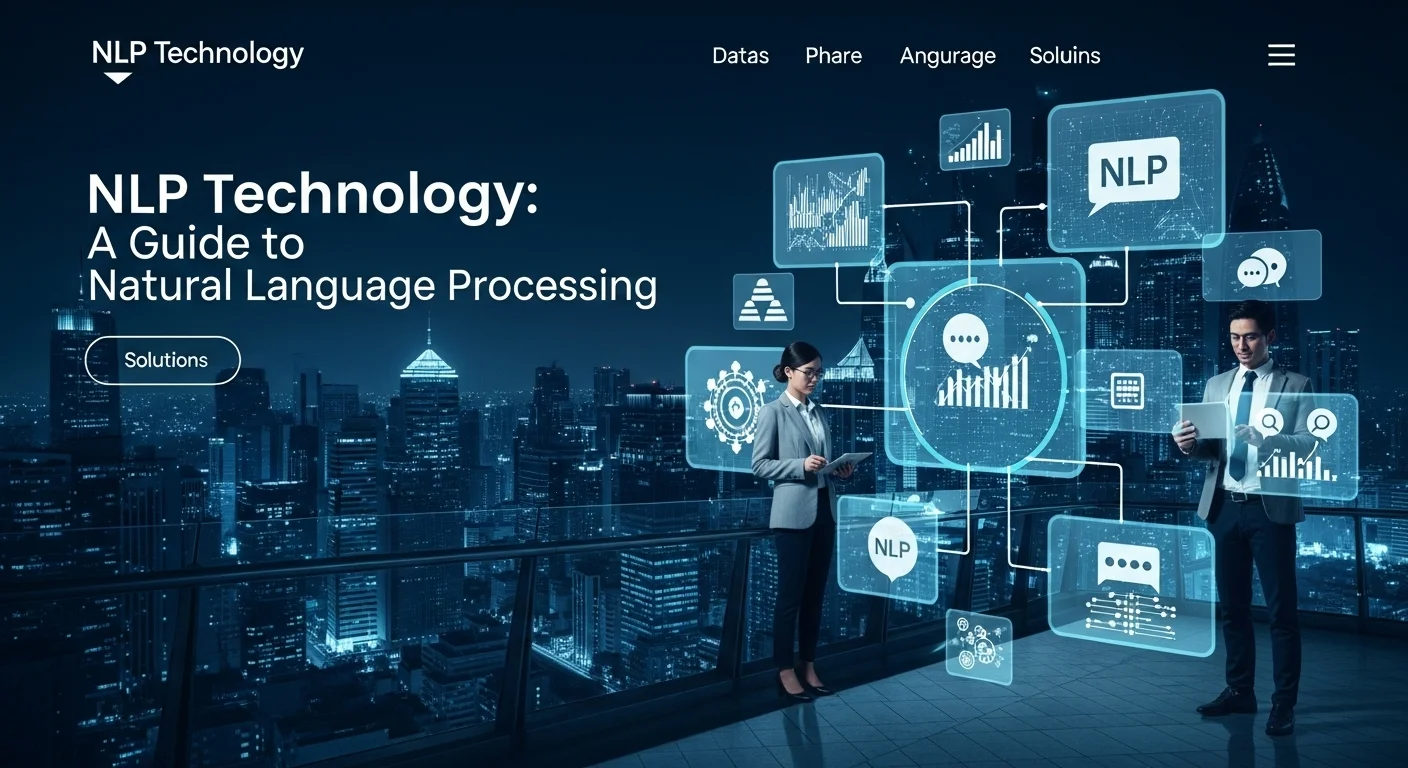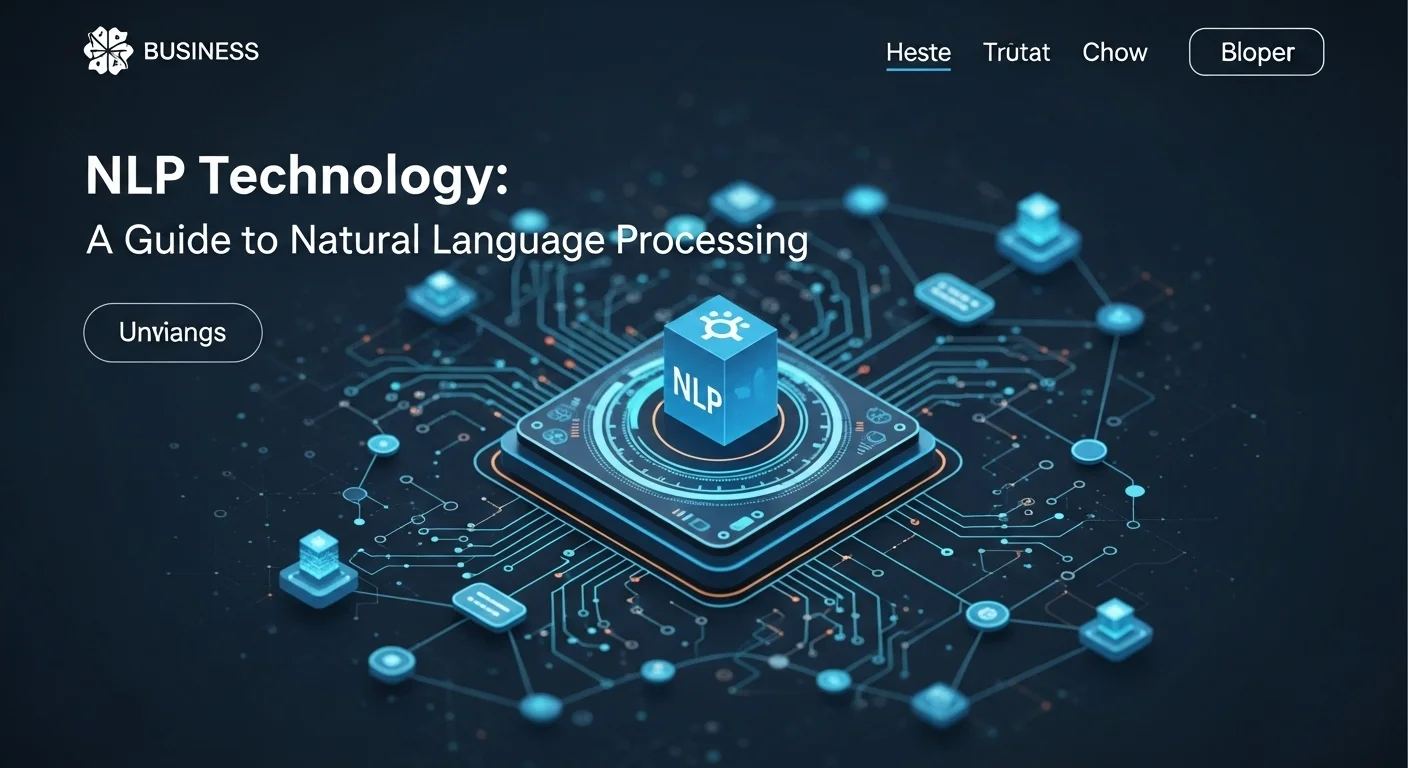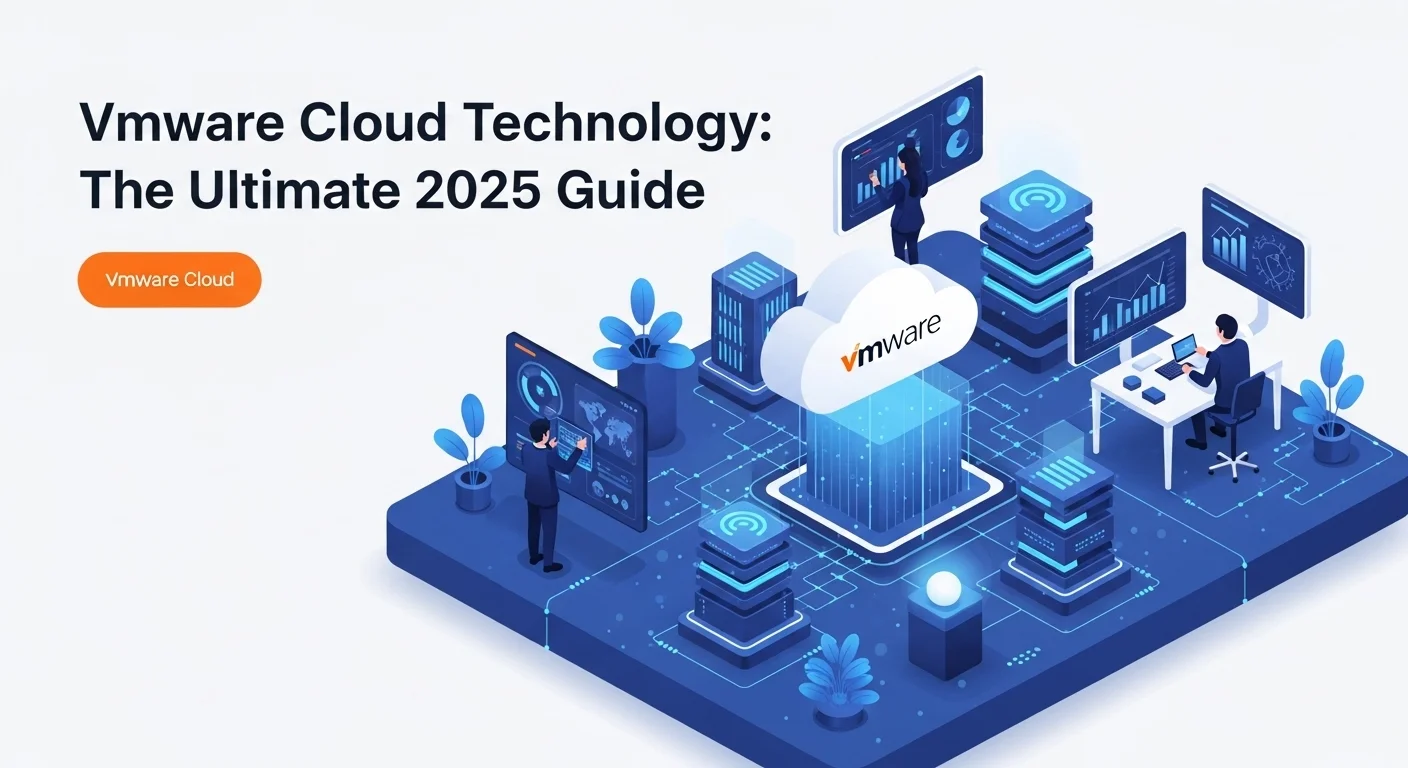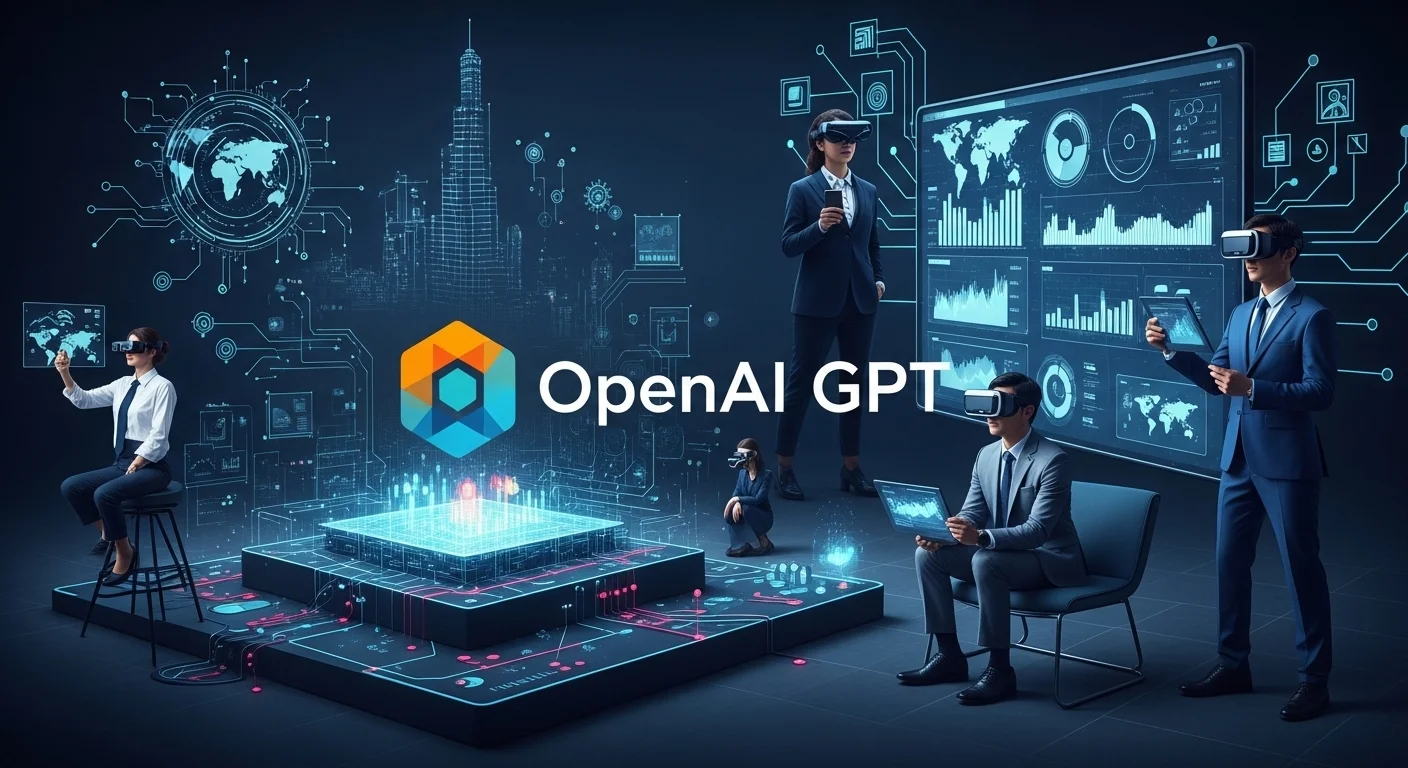What is NLP? A Human's Guide to Natural Language Processing

Executive Summary
Natural Language Processing, or NLP, is the fascinating field of AI that teaches computers to understand and use human language. It’s the magic behind the voice assistants we talk to, the chatbots that help us online, and the search engines that seem to read our minds. For a long time, this felt like science fiction, but now it's a game-changer for businesses. It helps automate tasks, pull real meaning from oceans of data like customer reviews, and genuinely improve how companies talk to their customers. In this article, I'll break down what NLP really is, show you how it works without the confusing jargon, and explore how companies are using it to innovate and grow. It’s not just for tech experts anymore; it's for anyone ready to see what's next.
Table of Contents
Table of Contents
What Exactly is Natural Language Processing?
Natural Language Processing, or NLP, is one of those terms you hear all the time in tech circles, but what does it really mean? At its heart, NLP is a field of artificial intelligence that focuses on one simple, yet incredibly complex, goal: teaching computers to understand human language. I like to think of it as building a bridge. On one side, you have us, with our messy, nuanced, and context-rich languages like English or Spanish. On the other side, you have a computer that only understands the rigid logic of ones and zeros. NLP is the bridge that connects these two worlds, allowing us to communicate with machines in a way that feels natural.
This isn't brand-new science, but the explosion of data and computing power in recent years has taken it to a whole new level. It's the engine running behind the scenes of so many tools we take for granted—the Siri or Alexa that sets your morning alarm, the spam filter that keeps your inbox clean, and the Google Translate that helps you order coffee in a foreign country. Essentially, NLP is divided into two key jobs. The first is Natural Language Understanding (NLU), which is all about the computer’s ability to 'read' and grasp the meaning of what you've said or typed. The second is Natural Language Generation (NLG), which is the computer's ability to craft a response that sounds human. When these two work together, you get the seamless conversations that are at the core of modern AI.
The Core Mechanics: How Does NLP Actually Work?
So how does a machine learn to 'read'? It's a multi-step process that combines linguistics with powerful machine learning models. The first thing an NLP system does is break down our language into a format it can analyze. It's a bit like preparing ingredients before you start cooking. Here are the basic steps:
- Tokenization: This is where the computer chops up a sentence into individual words or 'tokens'. The sentence 'I love reading great articles' becomes 'I', 'love', 'reading', 'great', 'articles'.
- Stop Word Removal: Next, it often removes common, low-value words like 'I', 'is', 'an', and 'the' that don't add much meaning.
- Stemming and Lemmatization: This step simplifies words to their root form. For example, 'reading' becomes 'read'. This helps the machine understand that 'read', 'reads', and 'reading' all refer to the same basic concept.
- Part-of-Speech (POS) Tagging: The machine then labels each word with its grammatical role, like noun, verb, or adjective. This helps it understand the structure and relationship between words in a sentence.
Why NLP is a Game-Changer in Modern Technology
The real importance of NLP becomes clear when you consider the sheer amount of unstructured data we create every single day. Every email, social media post, customer review, and text message is a piece of unstructured, language-based data. Trying to analyze this manually is simply impossible. I've worked with companies that were sitting on mountains of customer feedback they couldn't use. NLP provides the key to unlock that data. It automates the process, allowing businesses to analyze text and speech at a massive scale to find invaluable insights.
This capability is transforming industries. Companies use NLP to power intelligent chatbots that improve customer service, to analyze social media for public sentiment about a new product, or even to screen résumés to find the perfect job candidate. It allows technology to be more accessible, too. Voice commands let people with physical disabilities interact with the digital world more easily, and real-time translation tools are breaking down global communication barriers. In short, NLP is making technology smarter, more responsive, and more human. As we move forward, a machine's ability to understand us will be a cornerstone of innovation.
A Look at the Innovators Shaping the NLP Landscape
The incredible pace of NLP development is fueled by a dynamic mix of tech giants and nimble startups. When a business decides to integrate this tech, they often look for an experienced NLP development company to guide them. You have the major players like Google, Amazon, IBM, and Microsoft, who offer robust NLP services through their cloud platforms, providing the building blocks for countless applications. But alongside them, a wave of exciting new companies has emerged. Startups like OpenAI, Hugging Face, and Cohere have become household names in the AI community, especially for their work on the large language models (LLMs) that have captured the public's imagination. Hugging Face, in particular, has become a collaborative hub, an open-source library where developers can share and fine-tune thousands of pre-trained models. This spirit of collaboration has massively accelerated innovation. Finding the right partner, whether it's one of these top-tier companies or a specialized startup, is one of the most important steps in turning the potential of NLP into a real competitive advantage.

Putting NLP to Work: Real-World Tech and Business Strategies
Moving beyond the 'what' and 'why' of Natural Language Processing, let's get into the 'how'. For any organization looking to tap into this technology, understanding the different technical approaches and business applications is where the rubber meets the road. The journey from a raw piece of text to a valuable business insight is a structured one, refined over decades and now supercharged by modern AI. My experience has shown me that the most successful projects aren't just about having the best algorithm; they're about matching the right technique to a real-world problem and finding a proficient NLP development company to help bring that vision to life.
Technical Methods: From Hand-Coded Rules to Self-Learning Networks
The way we build NLP systems has changed dramatically. In the early days, it was all about rules. We'd have teams of linguists and developers manually writing grammatical rules to try and decipher text. It worked for very specific tasks, but it was brittle—a single unexpected phrase could break the whole system. Then came a major shift with statistical methods. Instead of telling the machine the rules, we started letting it learn them from data. This was a huge leap forward.
Today, we're in the era of deep learning and neural networks. The revolution really took off with a concept called 'word embeddings,' which allowed models to understand the relationships between words. For the first time, a machine could grasp that 'king' and 'queen' are more related to each other than 'king' and 'pancake'. From there, we developed models like LSTMs that could process sentences sequentially, remembering the context from earlier words. But the true game-changer has been the Transformer architecture. You've likely heard of models like BERT and GPT—these are built on Transformers. Their 'attention mechanism' allows them to look at an entire sentence at once and weigh the importance of every word in relation to every other word. This provides a much deeper, more nuanced understanding of context and is the reason today's AI can generate such incredibly human-like text. Many cutting-edge NLP AI companies are now building their entire platforms around this powerful technology.
Business Techniques and Applications
So, how are businesses using these powerful techniques? The applications are incredibly diverse and are creating real value across the board. Here are some of the most common and impactful uses I've seen in the field:
- Sentiment Analysis: This is a classic. Imagine being able to instantly know the general feeling about your brand across Twitter, Facebook, and thousands of product reviews. Companies use sentiment analysis to get real-time feedback, letting them quickly fix problems or double down on what customers love.
- Next-Gen Chatbots & Virtual Assistants: We've moved far beyond the clunky 'I don't understand' chatbots. Modern NLP-powered assistants can handle complex customer service queries 24/7, from tracking a package to changing a reservation, freeing up human agents for more challenging issues.
- Information Extraction: Businesses are drowning in documents—contracts, reports, emails. NLP can scan them in seconds to pull out key information like names, dates, or contract values. It can also create short, accurate summaries of long articles, saving teams hundreds of hours of reading.
- Smarter Hiring: HR departments use NLP to scan thousands of résumés and identify the most promising candidates based on skills and experience, reducing manual work and helping to mitigate unconscious bias.
- Market Research: By analyzing online conversations, NLP tools help companies spot emerging trends, understand competitor strategies, and discover unmet customer needs before anyone else.
Choosing Your Tools: A Comparison of Available Resources
If you're ready to get started with NLP, you have a wealth of options, each with its own pros and cons. The choice really depends on your team's expertise and your project's goals.
- Open-Source Libraries: For teams with technical skills, open-source is the way to go. Libraries like spaCy and NLTK are fantastic for foundational NLP tasks. If you want to work with the latest deep learning models, Hugging Face's Transformers library is the industry standard. This path offers maximum flexibility but requires a solid engineering team.
- Cloud-Based NLP Services: The big cloud providers—AWS, Google Cloud, and Microsoft Azure—offer powerful NLP tools available via a simple API call. This is a great choice for companies that want to move fast without managing complex infrastructure. You can add things like sentiment analysis or language translation to your app in a matter of hours.
- Specialized NLP Platforms: Beyond the giants, many of the best NLP startups offer specialized platforms built for specific industries like healthcare or finance. These tools often come with pre-trained models and workflows optimized for that domain, providing a turnkey solution.

Your NLP Playbook: Tips and Strategies for Success
Bringing Natural Language Processing into your business isn't just a technical task; it's a strategic move. I've been fortunate enough to see many NLP projects from the inside, and I can tell you that the most successful ones follow a clear playbook. They start with a solid plan, focus on quality, and choose their tools wisely. By adopting these proven strategies, you can avoid the common pitfalls and ensure your investment in this technology pays off, whether you're building it in-house or working with an expert NLP development company.
Best Practices I've Learned for NLP Implementation
Over the years, I've seen that success in NLP often hinges on getting the fundamentals right. Rushing into a project without a clear strategy is a recipe for disappointment. Here are the core practices I always recommend:
- Start with the 'Why', Not the 'What': Before you even think about algorithms, clearly define the business problem you're solving. Are you trying to reduce customer support tickets? Or gain faster market insights? A laser-focused objective will be your North Star for every decision that follows. Don't use NLP just because it's trendy; use it to create real value.
- Your Model is Only as Good as Your Data: This is the golden rule. You must invest time in gathering high-quality, relevant data. This almost always involves a serious clean-up effort to handle errors and inconsistencies. If you need labeled data, don't cut corners. A well-thought-out annotation process is critical for training an accurate model.
- Create a Baseline First: Don't jump straight to the most complex, state-of-the-art model. I always advise starting with something simple—maybe even a basic rule-based system. This gives you a benchmark. That way, when you try a more advanced model, you can definitively say whether the extra complexity is actually delivering better results.
- Think Like a Scientist: Iterate and Test: NLP development is a cycle of building, testing, and learning. Get a prototype into the hands of real users as quickly as possible. Their feedback is invaluable. This agile, iterative approach allows you to continuously refine your solution based on real-world performance.
- Plan for Life After Launch: Language is constantly changing. The slang, products, and topics people talk about today are different from last year. This 'data drift' can make your model less accurate over time. You need a plan to monitor your model's performance in the real world and retrain it periodically to keep it sharp.
The Essential Tools and Technologies for Your Business
The right tools can make all the difference in an NLP project. The ecosystem is rich, so the key is to pick the technology that fits your team's skills and goals. Here’s how I typically break down the options for clients:
- For the DIY Tech Team (Open-Source): If you have a strong data science team, open-source libraries give you complete control. I recommend spaCy for its speed and production-readiness, and the Hugging Face Transformers library is a must-have for accessing the latest and greatest pre-trained models like BERT and GPT.
- For Speed and Simplicity (Cloud Platforms): If you want to move fast without hiring a team of ML engineers, the NLP services from AWS, Google Cloud, and Microsoft Azure are fantastic. They let you add powerful language features to your applications with a simple API call.
- For Efficient Training (Annotation Tools): If your project needs custom-trained models, you'll need to label data. Tools like Prodigy are designed to make this process as fast and efficient as possible, helping you create high-quality training datasets.
- For an All-in-One Solution (End-to-End Platforms): A growing number of NLP AI companies offer platforms that handle the entire process, from data prep to model deployment and monitoring. These can accelerate development significantly, especially for teams that want a more guided experience.
Finding the Right Partner to Enhance Your Tech Experience
Ultimately, the goal of NLP is to create better experiences—whether that's faster customer support, more relevant content, or automated workflows that free up your team for more creative work. To get there, finding the right partner can be crucial. When you're evaluating an NLP development company, look beyond their technical sales pitch. Do they have a proven track record in your industry? Ask to see case studies and talk to their past clients. A great partner doesn't just build technology; they understand your business challenges and act as a guide. The landscape of top NLP startups and established firms is wide, offering many potential partners. For those who want to dive deeper into the research, I always recommend exploring the ACL Anthology, a comprehensive repository of scientific papers from the Association for Computational Linguistics. It's the best place to see where the future of language technology is headed. Choosing the right partner and the right tools is the final step in ensuring your NLP project delivers a truly superior experience for your users.
Expert Reviews & Testimonials
Sarah Johnson, Business Owner ⭐⭐⭐
As a small business owner, this guide was a fantastic introduction to NLP. It cut through the hype and explained the concepts clearly. I would have loved to see a few more case studies specifically for e-commerce, but it's a great starting point for anyone curious about the topic.
Mike Chen, IT Consultant ⭐⭐⭐⭐
A really solid overview of NLP. I'm an IT consultant, and I'm often asked to explain this to clients. This article gave me some great analogies and simplified explanations I can use. It's comprehensive without being overly technical.
Emma Davis, Tech Expert ⭐⭐⭐⭐⭐
Excellent article! As a tech student specializing in AI, I found this incredibly valuable. It connects the technical concepts to real-world business applications perfectly. It's well-structured, easy to follow, and one of the best summaries I've read.



